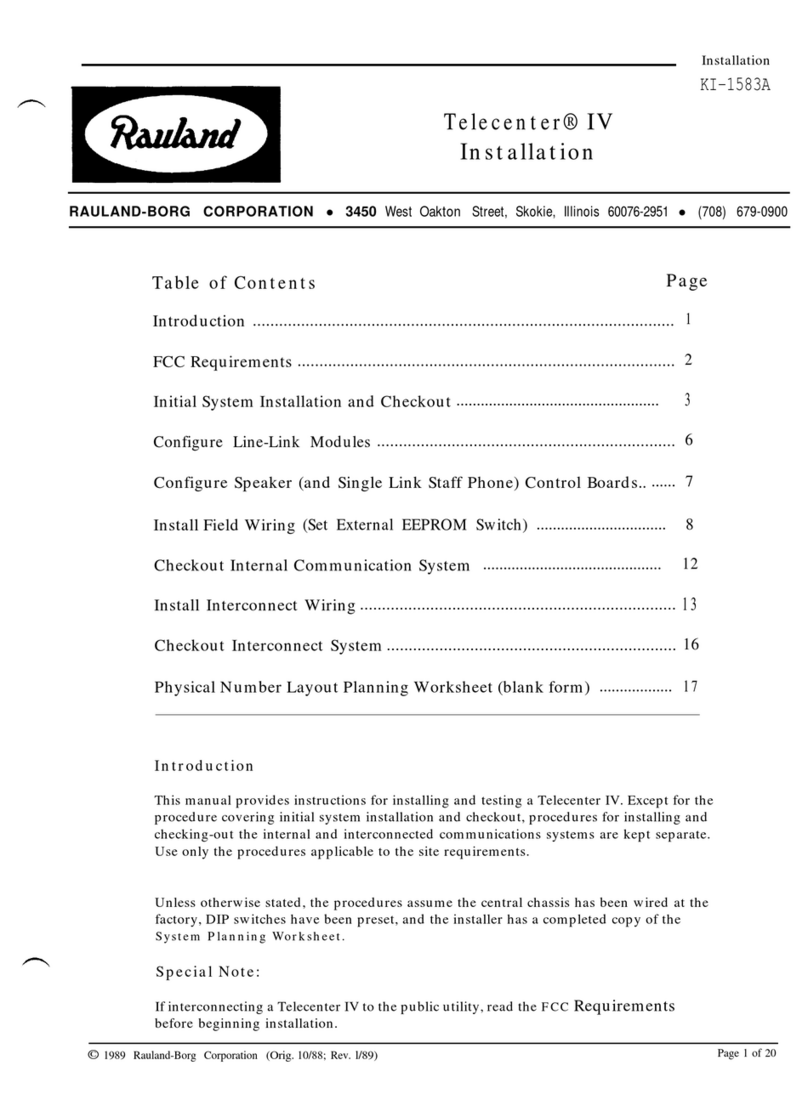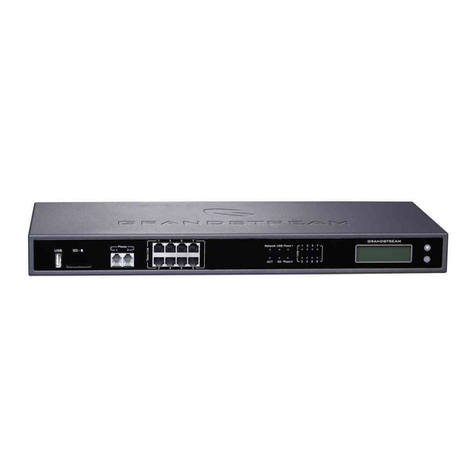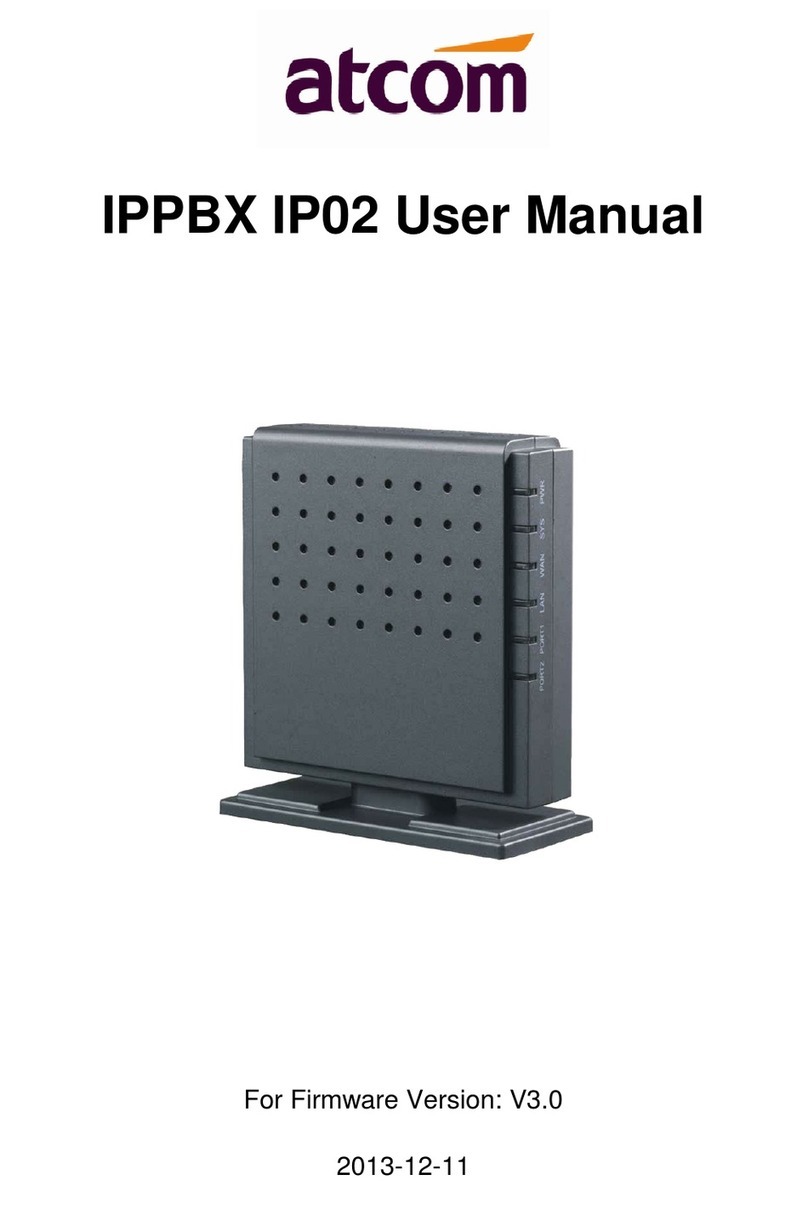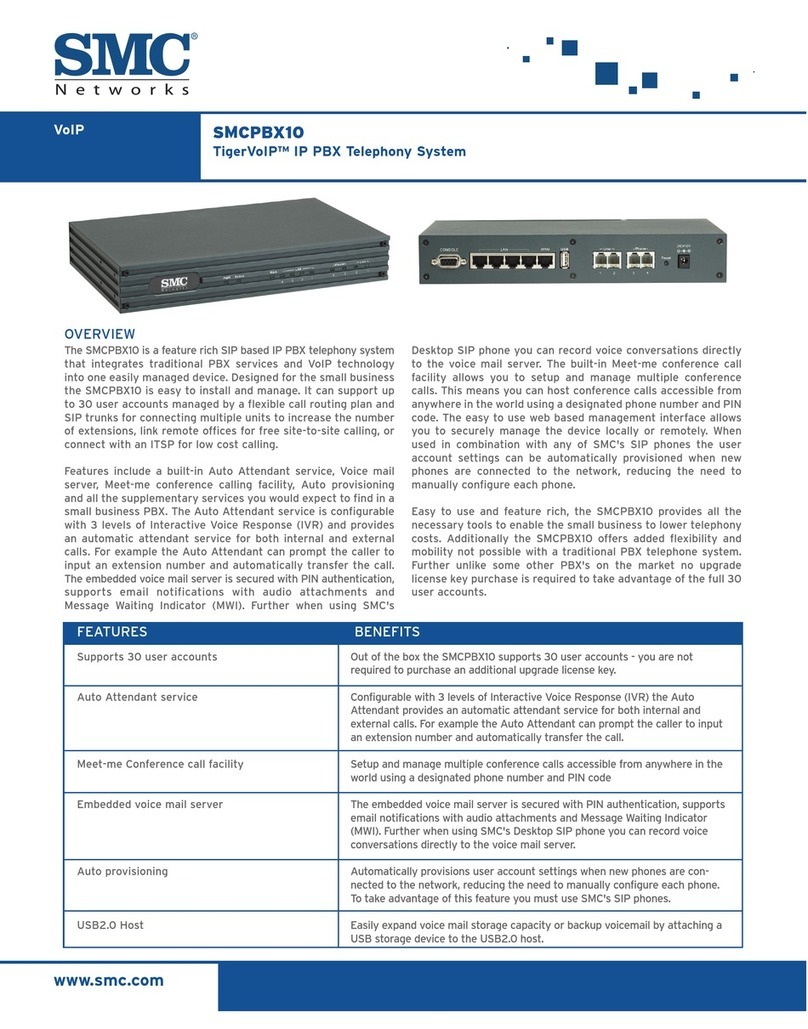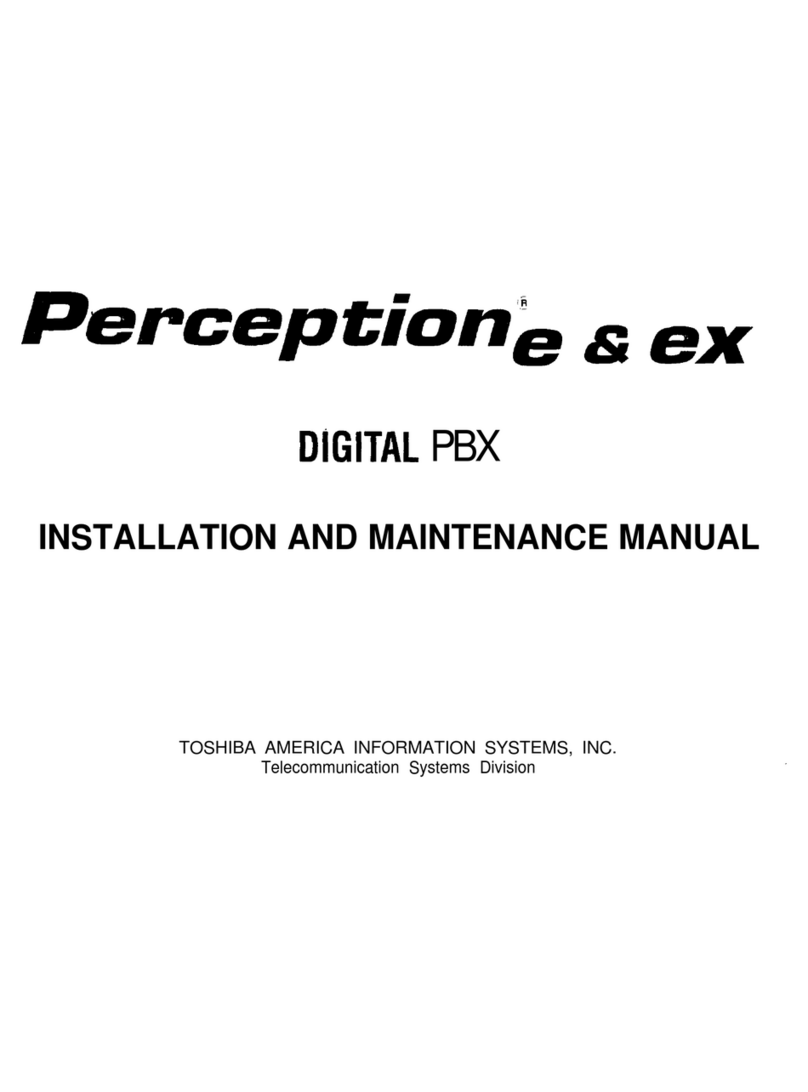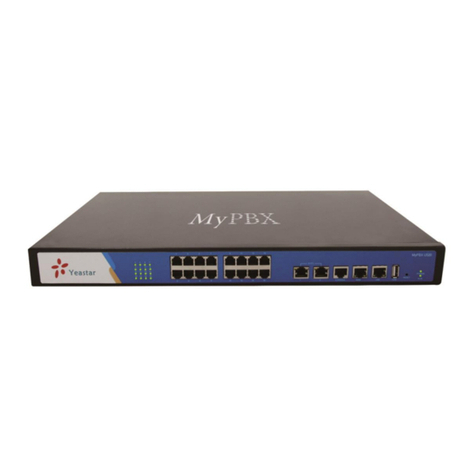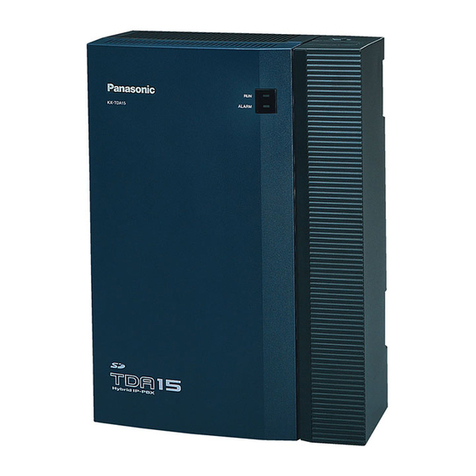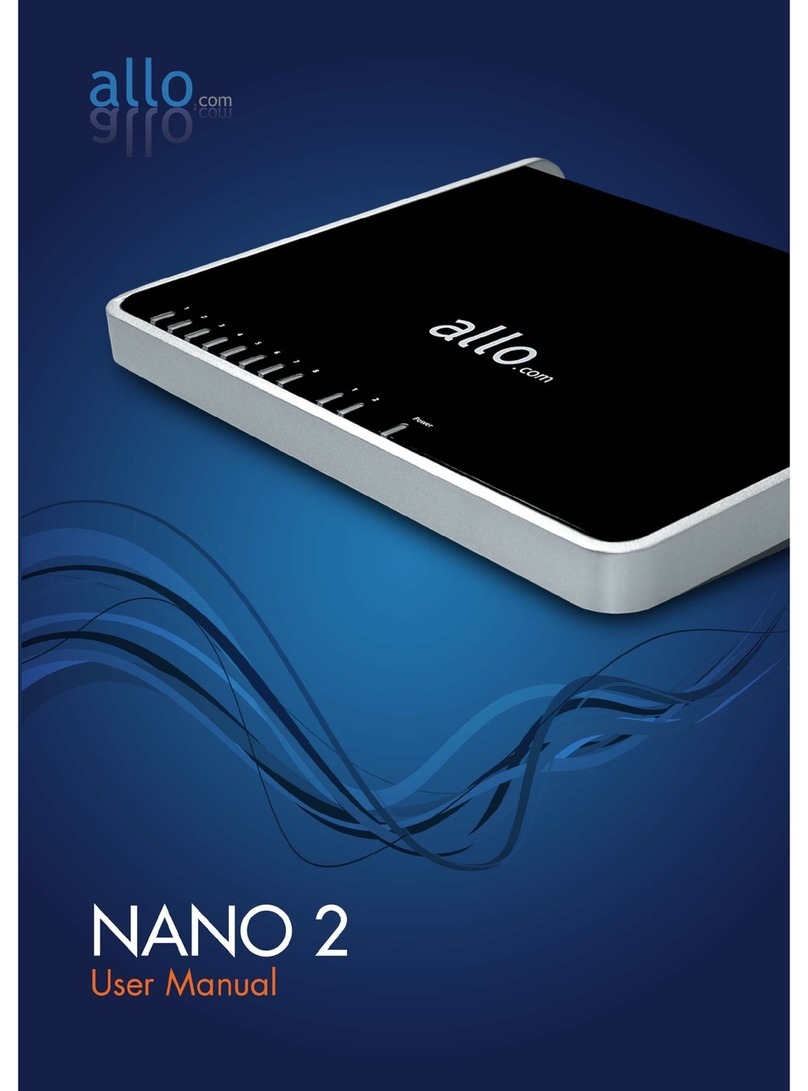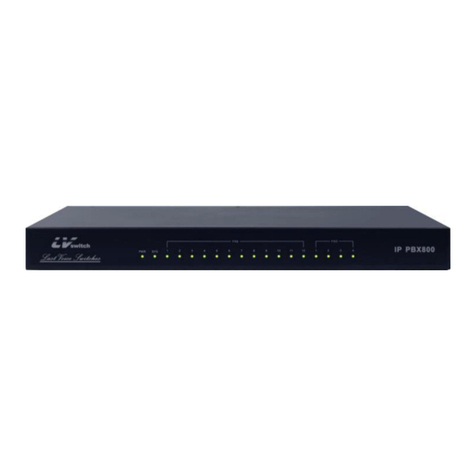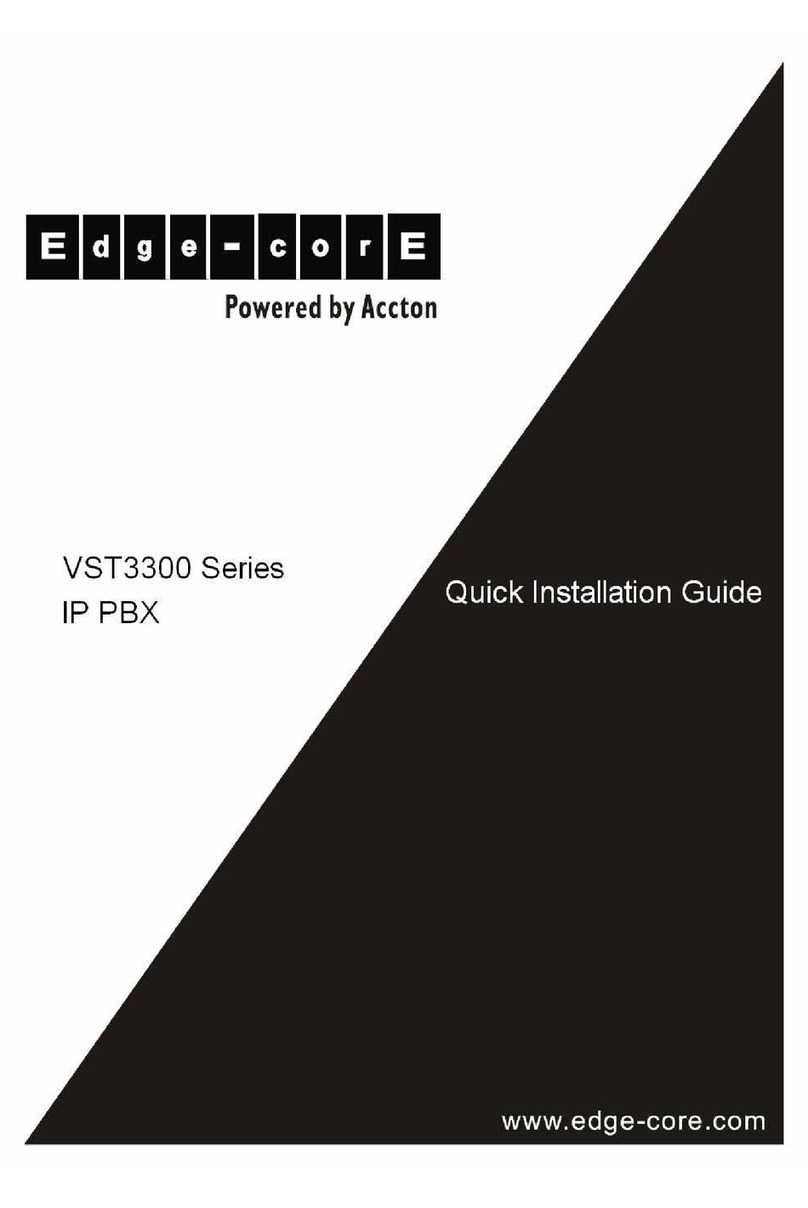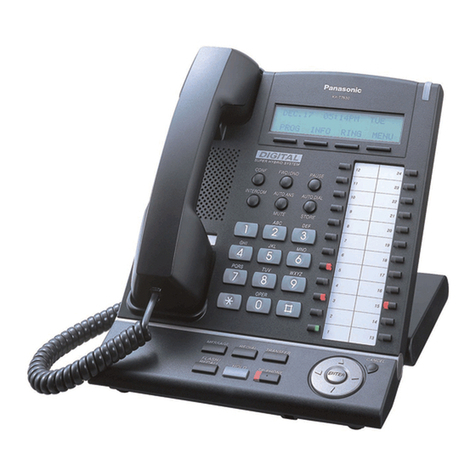
6
System Overview
System Operation
NX-308 system is a stored-program-controlled electronic key/hybrid telephone system ready to use as
soon as it is turned on. A powerful 8031 microprocessor operating at 11.059 MHz digitally controls all
speech paths and system functions. The operating program with default memory is stored in non-
volatile ROM, 27512. Customer data is stored in RAM, 62256, and protected by a Ni-Cd battery for up
to thirty days’continuous loss of system power. When AC power is restored, the Ni-Cd battery is
recharged.
There is a maximum capacity of three (3) telephone lines and eight (8) stations of which six (6) stations
can be easily selected as keysets and single line telephones.
Comprising only a key service unit (KSU), electronic keysets and conventional single line telephones,
NX-308 offers small business users flexibility and control of telephone communications.
System Configuration
NX-308 system comprises a KSU, proprietary electronic keysets, conventional single line telephones,
proprietary door phones, and conventional additional feature equipment. The plastic-cased KSU
provides all the powerful features itself, making for easy, convenient installation and maintenance.
The KSU is equipped to operate three (3) telephone lines and eight (8) stations. Stations from 1 to 2
are assigned for electronic keysets; stations from 3 to 8 are assigned to be used with either single line
telephones or keysets.
NX - 308 is a fully non-blocking system.
Circuit Type Location Number
Electronic Keyset Station 1 to 8
Single Line Telephone Station 3 to 8
C.O./PBX Line (loop start) Trunk 1 to 3
System Hardware
Key Service Unit (KSU)
The KSU is a single-cabinet, wall-mounted, plastic-cased unit measuring 420mm (H) x 300mm (W) x
84mm (D), and weighing 4.5 kg. It contains the following assemblies:
Power Supply - provides all the regulated DC voltages necessary for system operating from 220V
AC power. Also contains a charge/discharge circuit for 24V external battery back-up connections
and ring generator for conventional single line telephones.
Base Board - the main printed circuit board that contains CPU memory, common control, and
switching circuitry. Provides interfaces for telephone lines 1 through 3, stations 1 through 8, and
these additional features:
Music on hold & background music source
External paging
Power fail transfers for lines 1 through 2
One door phone with lock release contact
Also contains memory back-up battery and real-time clock.
